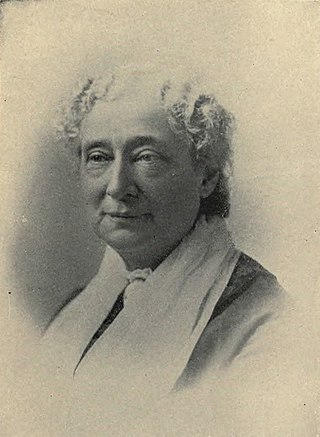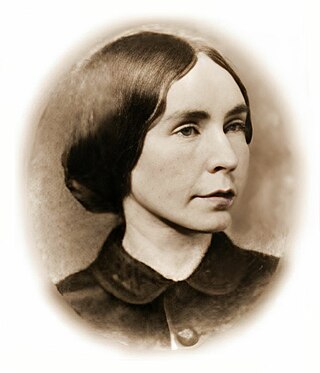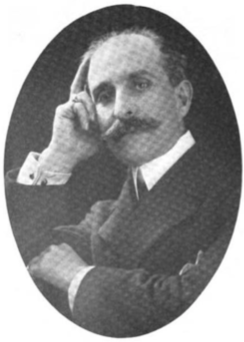Ben-Hur or Ben Hur may refer to:

Lewis Wallace was an American lawyer, Union general in the American Civil War, governor of New Mexico Territory, politician, diplomat, artist, and author from Indiana. Among his novels and biographies, Wallace is best known for his historical adventure story, Ben-Hur: A Tale of the Christ (1880), a bestselling novel that has been called "the most influential Christian book of the nineteenth century."

Ben-Hur: A Tale of the Christ is a novel by Lew Wallace, published by Harper and Brothers on November 12, 1880, and considered "the most influential Christian book of the nineteenth century". It became a best-selling American novel, surpassing Harriet Beecher Stowe's Uncle Tom's Cabin (1852) in sales. The book also inspired other novels with biblical settings and was adapted for the stage and motion picture productions.

Ben-Hur: A Tale of the Christ is a 1925 American silent epic adventure-drama film directed by Fred Niblo and written by June Mathis based on the 1880 novel Ben-Hur: A Tale of the Christ by General Lew Wallace. Starring Ramon Novarro as the title character, the film is the first feature-length adaptation of the novel and second overall, following the 1907 short.

Ben Hur is a 1907 American silent drama film set in ancient Rome, the first screen adaptation of Lew Wallace's popular 1880 novel Ben-Hur: A Tale of the Christ. Co-directed by Sidney Olcott and Frank Oakes Rose, this "photoplay" was produced by the Kalem Company of New York City, and its scenes, including the climactic chariot race, were filmed in the city's borough of Brooklyn.

Ben-Hur is a 1959 American epic religious film directed by William Wyler, produced by Sam Zimbalist, and starring Charlton Heston as the title character. A remake of the 1925 silent film with a similar title, it was adapted from Lew Wallace's 1880 novel Ben-Hur: A Tale of the Christ. The screenplay is credited to Karl Tunberg, but includes contributions from Maxwell Anderson, S. N. Behrman, Gore Vidal, and Christopher Fry.

Zerelda Gray Sanders Wallace was the First Lady of Indiana from 1837 to 1840, and a temperance activist, women's suffrage leader, and inspirational speaker in the 1870s and 1880s. She was a charter member of Central Christian Church, the first Christian Church in Indianapolis, Indiana. Her husband was David Wallace, the sixth governor of Indiana; Lew Wallace, one of her stepsons, became an American Civil War general and author.

Susan Arnold Elston Wallace was an American author and poet from Crawfordsville, Indiana. In addition to writing travel articles for several American magazines and newspapers, Wallace published six books, five of which contain collected essays from her travels in the New Mexico Territory, Europe, and the Middle East in the 1880s: The Land of the Pueblos (1888), The Storied Sea (1883), The Repose in Egypt: A Medley (1888), Along the Bosphorus, and Other Sketches (1898), and The City of the King: What the Child Jesus Saw and Heard (1903). She was also the wife of Lew Wallace, a lawyer, American Civil War general, politician, author and diplomat. Susan completed the manuscript of Lew Wallace's two-volume autobiography following his death in 1905, with the assistance of Mary Hannah Krout, another Crawfordsville author. Wallace died in Crawfordsville in 1907.

Hippodrama, horse drama, or equestrian drama is a genre of theatrical show blending circus horsemanship display with popular melodrama theatre.
Ben Hur Live is a 2009 stage adaptation of Lew Wallace's 1880 novel Ben-Hur: A Tale of the Christ. Produced by Franz Abraham with music and narration by Stewart Copeland, it premièred on 17 September 2009 at the O2 Arena in London, the first date of its European tour.

Grace George was a prominent American stage actress, who had a long career on Broadway stage and also appeared in two films.

The Golden Age of Indiana Literature is a period from 1880 to 1920 when many nationally and internationally acclaimed literary works were created by natives of the state of Indiana. During this time, many of the United States' most popular authors came from Indiana. Maurice Thompson, George Ade, Booth Tarkington, Theodore Dreiser, Edward Eggleston, Frank McKinney Hubbard, George Barr McCutcheon, Meredith Nicholson, Gene Stratton Porter, Lew Wallace, and James Whitcomb Riley were foremost among the Hoosier authors.
The Tribe of Ben-Hur was a fraternal organization based on the novel Ben-Hur: A Tale of the Christ by Lew Wallace. In 1930 it became the Ben-Hur Life Association.

Metro-Goldwyn-Mayer (MGM) originally announced a remake of the 1925 silent film Ben-Hur in December 1952, ostensibly as a way to spend its Italian assets. Stewart Granger and Robert Taylor were reported to be in the running for the lead. Nine months later, MGM announced it would make the film in CinemaScope, with shooting beginning in 1954. In November 1953, MGM announced it had assigned producer Sam Zimbalist to the picture and hired screenwriter Karl Tunberg to write it. Zimbalist was chosen because he had produced MGM's Best Picture-nominated Christians-and-lions epic Quo Vadis in 1951. The studio then announced in July 1954 that production would start in March 1955 with 42 speaking parts and 97 sets. MGM said Sidney Franklin would direct, that the script by Tunberg was finished, that shooting would occur in Rome and in Spain, and that Marlon Brando was up for the lead. In September 1955, Zimbalist, who continued to claim that Tunberg's script was complete, announced that a $7 million, six-to-seven month production would begin in April 1956 in either Israel or Egypt in MGM's new 65mm widescreen process. MGM, however, suspended production in early 1956.
William Wallace Young was an American playwright, writer, and actor, best known for his play adaptation of the novel Ben-Hur in 1899.

Ben-Hur is a 2016 epic historical drama film directed by Timur Bekmambetov and written by Keith Clarke and John Ridley. It is the fifth film adaptation of the 1880 novel Ben-Hur: A Tale of the Christ by Lew Wallace following the 1907 silent short film, the 1925 silent film, the Academy Award-winning 1959 film and the 2003 animated film; it is the third version produced by Metro-Goldwyn-Mayer. It has been termed a "re-adaptation", "reimagining", and "new interpretation" of the novel, and follows Judah Ben-Hur, a young prince who is falsely accused by his step-brother, an officer of the Roman army, and is sent to slavery, only to escape and seek vengeance. The film stars Jack Huston as the titular character, alongside Toby Kebbell, Rodrigo Santoro, Nazanin Boniadi, Ayelet Zurer, and Morgan Freeman. Principal photography began on February 2, 2015, in Matera, Italy and lasted about five months, finishing in June 2015.

Judah Ben-Hur, shortened to Ben-Hur, is a fictional character, the title character and protagonist from Lew Wallace's 1880 novel Ben-Hur: A Tale of the Christ. The book covers the character's adventures and struggle against the Roman Empire as he tries to restore honor to his family's name after being falsely accused of attacking the Roman governor. Judah encounters Jesus Christ and becomes a Christian.
Kalem Co. v. Harper Bros., 222 U.S. 55 (1911), was a United States Supreme Court case in which the Court held producing a motion picture based on a dramatic work can be copyright infringement. The producer of the motion picture is liable even they are not the exhibitor. This does not extend to a restriction of the dramatic work's ideas; it is a recognition of the author's monopoly powers granted by Congress.

Benjamin Moses Teal was an American actor, theater director, and playwright. He directed over 30 plays on Broadway between 1897 and 1916, and was widely known for his strict, often brusque stage direction. Born in Eugene, Oregon, Teal spent his formative years in San Francisco, where he began performing as a child actor in theatrical productions.
Benjamin Stannard Mears, also known as Ben Mears, Ben S. Mears, and Stannard Mears, was an American stage actor, vaudeville performer, and playwright. He is best known for the 1918 play Seventeen; an adaptation of Booth Tarkington's 1916 novel of the same name which he co-wrote with Hugh Stanislaus Stange.
















